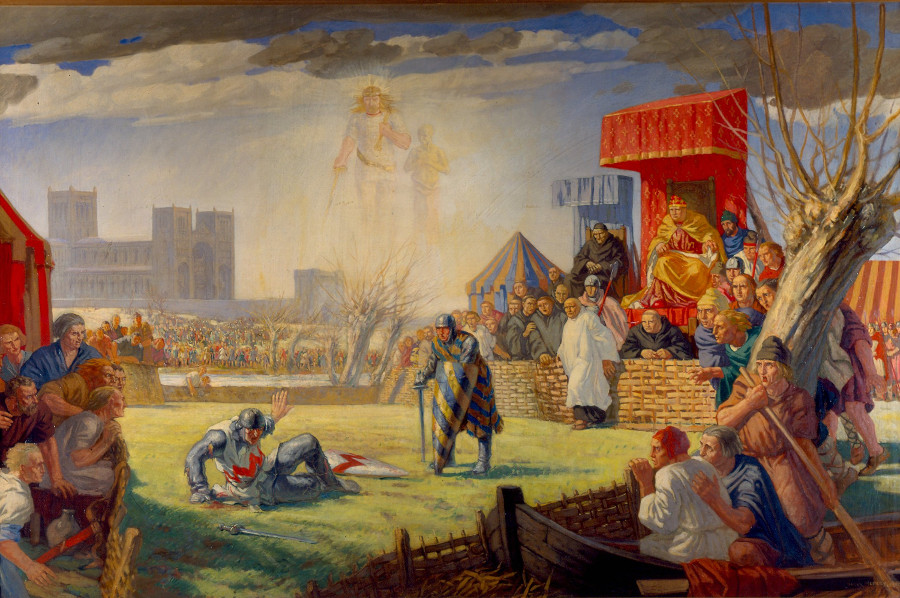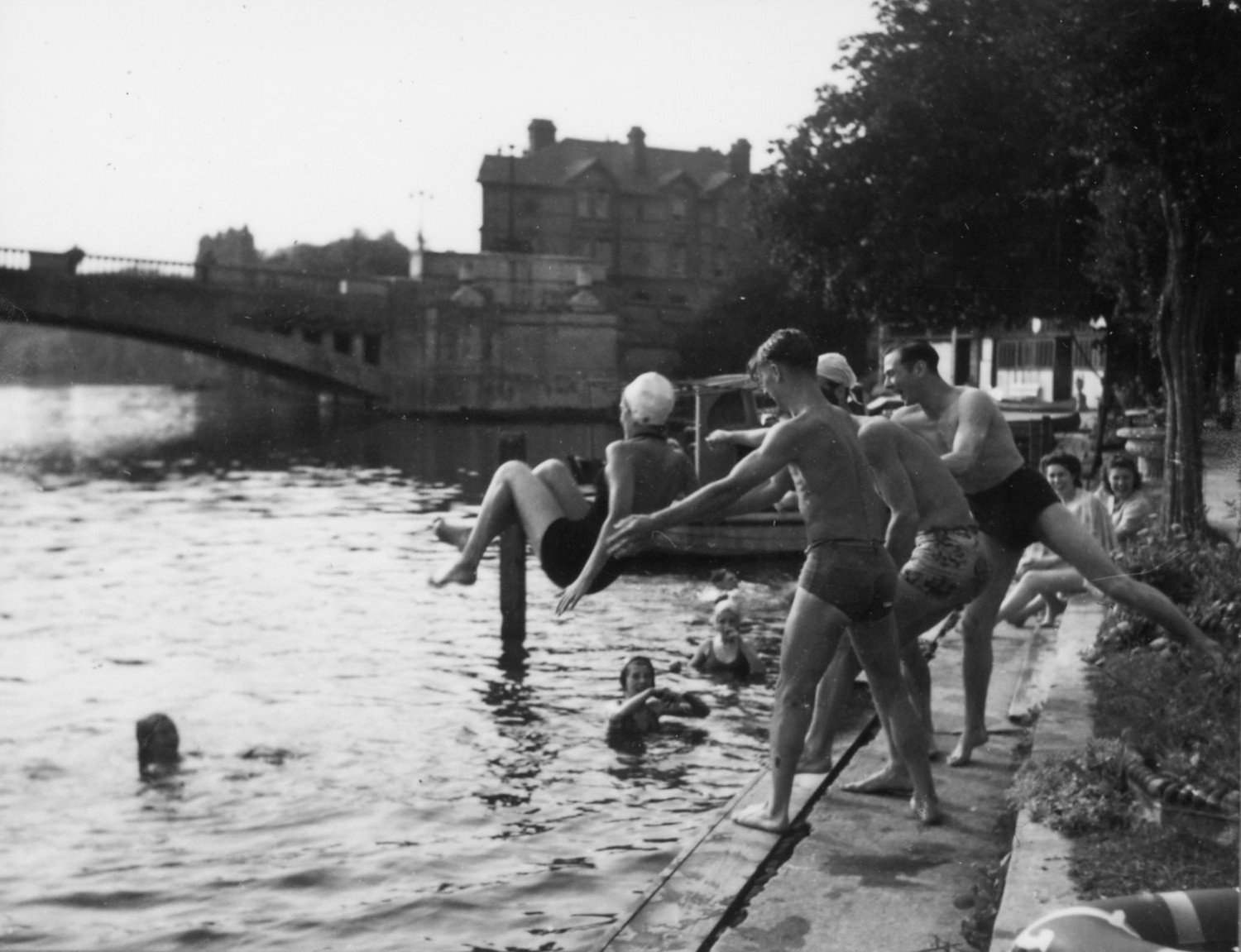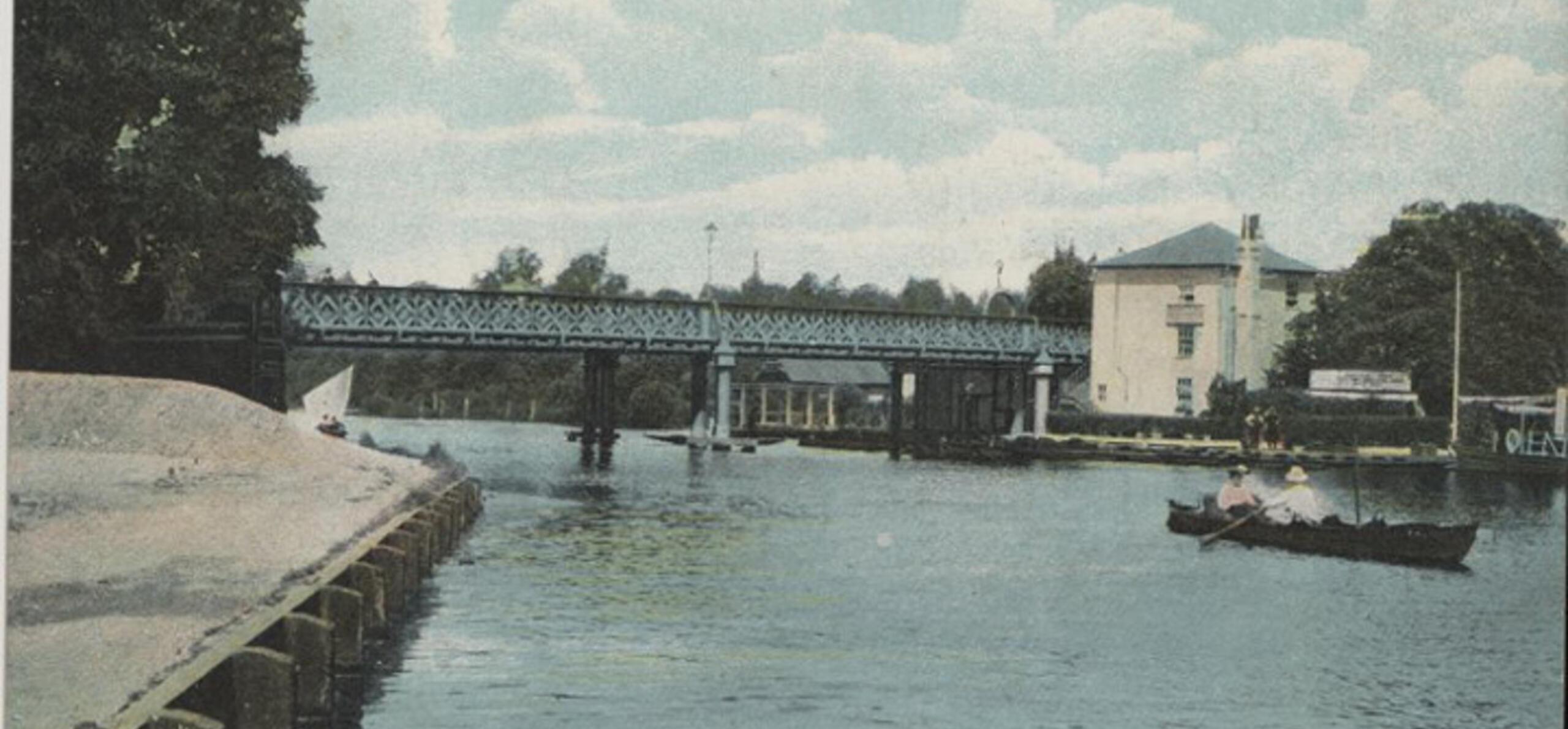Reading’s life-giving waterways have been absolutely vital to the development of the town over the centuries, providing a natural transport route for trade and commerce as well as a plentiful supply of food and of building materials in the form of willows, reed plants and gravels. In fact, Reading’s rivers have been attracting human activity to the area for no less than about half a million years. So it was probably about time that we took notice and celebrated with a festival, something which Reading always does best!
It was great to see so many Reading residents and visitors enjoy the events and take part in the activities laid on during this September’s inaugural Reading-on-Thames Festival. We had a tremendous response from the hundreds of history fans who came to the Reading Abbey on Wheels pop up museum at Caversham Court Gardens during the finale event. Another Festival highlight was Reading Between the Lines Theatre Company’s memorable outdoor performance of 'Reading's Royal Burial', the latest of their Abbey heritage themed plays. The setting of the play on the banks of the River Kennet at the Oracle really brought to life many fascinating aspects of Reading’s medieval history.
The ripple effect of Cheerleading for Reading’s Heritage is set to continue with plans for a number of exciting projects already underway. The Heritage Lottery funded Great Places project, a ground-breaking National Portfolio Organisation partnership between Reading Museum and Reading University’s Museum of English Rural Life, not to mention the reopening of the Reading Abbey Quarter in summer 2018 are all set to strengthen Reading’s place as a centre for heritage with a high quality, accessible and inclusive cultural life.
It feels like the town’s heritage is coming of age and beginning to be better understood and appreciated by all thanks to these recent initiatives and the efforts of so many fantastic volunteers along with the welcome support of a number of local business sponsors and funding agencies. Not least amongst these, Arts Council England which has pledged faith in Reading’s communities by allocating funds for a further three years of Reading-on-Thames Festivals.
As we reflect and take stock of this year’s first and undeniably spectacular festival here are - just for fun - five of the many fascinating facts about the River Thames at Reading which you might not already know.
1 Bridging Royal Eras
A.L. Humphreys was commissioned to write a book about the history of Caversham Bridge with a scheduled publication date of May 1926, coinciding with completion of the new ferro-concrete crossing that we see today. Humphreys managed to trace the story of the bridge, and its various incarnations, right back to the year 1231 when the 27-year-old King Henry III wrote a decree that the bridge would be kept in good order after the recent death of his close friend and mentor, William Marshall. The bridge had been founded some time earlier to link Marshall’s lands at Caversham with those of Reading’s Royal Abbey. It was at around this time that William Marshal had become the most powerful man in the land. Instrumental in the signing of the Magna Carta in 1215, and having been Regent to the infant King Henry, Marshall had practically ruled England from his manor at Caversham Park.
Humphrey’s book records a number of royals crossing over the bridge during the centuries that followed. Henry VIII’s first wife, Queen Catherine of Aragon, passed over in July 1532 during her pilgrimage to the Shrine of Mary at Caversham where she sought divine intercession over her marriage problems. Elizabeth I is recorded as having crossed the bridge during a visit to her favourite nobleman, Francis Knollys, in 1602. The bridge was a vital strategic crossing during the ruinous Civil War of the 1640s and it was here that the ill-fated King Charles I said goodbye to his family for the last time.
In his closing paragraphs, Humphreys records that the townsfolk were looking forward to welcoming another Royal visitor to open the new Bridge, none other than the audaciously dandy Edward, Prince of Wales. What Humphreys could not have predicted when he published his book was that it would forever carry a small error of detail. The scheduled Princely visit he reports for May that year would be cancelled because of the General Strike. It was, in fact not until June 1926 that the future King Edward VIII was able to come to Reading and unveil the plaque that adorns the south side of the bridge.
2 How the Warren got its name
Now the setting for some of the most desirable residences in Reading, there is a question mark over whether The Warren, on the chalky north bank of the river actually takes its name from the homes it once provided for rabbits. During the early medieval period the land was bestowed upon an Augustinian priory who imported a warren of bunnies for sport and food. A glance at local historian Adam Sowen’s wonderful book, Abattoirs Road to Zinzan Street, tells us that the land was, by a stunning coincidence, also once owned by Earl William de Warenne!
3 Some unusual river sports
Nestled between Reading and Caversham Bridge, adjacent to the newly built Christchurch Footbridge, Fry’s Island is home to a very unusual river sport – Flat Green Bowling! The Island Bohemian bowls club started life as the Old Codgers Club in 1909 and this most gentle of games has now been played on the islet for over a century. Until proven otherwise members of the club will boast that they hold the distinction of being the only bowling club in the world that is reached by ferry! The acre-long islet is also sometimes known as De Montfort Isle. This is in remembrance of Robert De Montfort who fought in a 'trial by combat' on the island after he accused Henry of Essex of cowardice for abandoning King Henry II’s royal standard during the Welsh Border wars of 1157. Essex came off worst in this fight to the death to prove his innocence. Mortally wounded, he was taken to Reading Abbey to die. Following a miraculous recovery the poor man was so ashamed of his guilt, proven by his loss in combat, that he could not face the world and, stripped of his land and titles, he spent the rest of his life in the Abbey as a member of the closed community of Benedictine monks.

'Trial by Combat of Henry de Essex and Robert de Montfort at Reading, April 8 1163' (Abbey Series No 2) by Harry Morley, 1918. Oil on canvas. Framed, glazed and signed.
4 Roots of the River
We can thank the far-sighted Edwardians for setting out the parklands and promenade that line the banks of the River Thames at Reading. The sweeping wide path running along the southern bank from Caversham Bridge towards Scours lane was purposefully designed for the leisurely strolls, to take in the fresh air and the scenery, that have been enjoyed for generations. The Promenade can be seen as an expression of the town’s new-found civic pride and confidence as the wealth created by the Victorian industries allowed Reading Corporation to buy up land on both sides of the river and give them over to the public who were, by now, enjoying much more leisure time than ever before. Recreational breaks in healthy pursuits away from arduous work in the town’s factories were seen as a reward and essential to nurturing a productive and happy work force. The Aldermen of the age followed the fashion for planting trees to landscape the parks and, despite the storm damage and diseases that have ensued over the decades, a great many of the original trees still stand. The banks of the Thames at Reading are therefore home to a range of interesting and some rare and exotic varieties. Amongst the most notable is the sole surviving elm tree in Reading. This is perched just beside the new Christchurch Bridge. Few of those who may now enjoy a picnic beneath its shade will be aware of the mystery that surrounds its survival from the terrible Dutch Elm disease that all but wiped out these beautiful, classically English, trees from our landscape during the epidemic that struck in the late 1970s. Further along the Promenade, against the fence that divides Little John’s Farm from the public meadowland, there is an unusual Bay Willow Tree. Again the only one of its kind in Reading, it is amongst the most mature specimens in the UK. The tree is home to a resident colony of Little Owls. This nocturnal bunch are not very fussy eaters and partial to the insects and small rodents that feed off the odd scraps left behind by revellers from the annual Reading Rock Festival. Grateful they may be for these rich pickings, it is not certain quite what these wise old creatures make of the music!
5 A Dirty Old River?
In his light-hearted guidebook to the River Thames, Three Men in a Boat, which was first published in 1889, the eminently quotable Jerome K Jerome wrote:
“We came to Reading at about 11 – The River is dirty here. One does not linger in the neighbourhood of Reading.”
- Jerome K Jerome Three Men in a Boat (1889)
Given Jerome’s gently mocking style we can take his observations of Reading with something of a pinch of salt. Earlier, in Idle thoughts of an idle Fellow, he stated:
“If there is one person I despise more than any other, it is the man who does not think exactly the same on all topics as I do.”
Here at Reading Museum we are sure that many would disagree with Jerome about his description of Reading. It is the case however that, at the time of his writing, the Thames and Kennet Rivers at Reading had been exhausted by the way that their power had been harnessed in pursuit of economic growth and prosperity. It was only during the 1860s that the town’s leadership had finally developed suitable means of dealing with effluent water by opening the Blakes Lock sewage pumping station. Unprecedented population growth combined with heavy pollution from unchecked burning of carbon-rich fossil fuel to drive the wheels of industry had all but poisoned the rivers. The Thames that Jerome encountered at Reading was therefore very different from the one that he would row into today. It was the Edwardians at the beginning of the 20th century who would first began to recover and repair this picturesque stretch of the River Thames.
The governance and management of the river changed hands from the Thames Conservancy to the authority of Thames Water in 1974 and in more recent years the rivers have been under the central control of the Environment Agency. Continuous efforts to clean up the rivers have had positive impact, so much so that a report produced by the Environment Agency in the year 2000 was able to claim that the Thames at Reading is cleaner than at any time since before the dawn of the industrial age. Today it is teaming with wildlife, with over 100 different species of fish, including the Salmon who swim upstream here to spawn. Recently Otter spraint has been found by the river, indicating a fish stock has returned to a level that supports these predatory creatures.
As a sure sign of the river’s general health, part of the fun of this year’s Reading-on-Thames Festival involved an intrepid band of river swimmers joining the ducks and fish. Completing a course around Fry’s Island under close supervision, and spurred on by the river artist Amy Sharrocks, they were reviving a long tradition of swimming in the river for leisure. Not something for the faint-hearted or novice swimmer because the Thames is fast flowing at 5mph, is deep at up to 30 feet and is cold with average temperatures of 8 degrees centigrade. The Thames lives up to its name, which is thought to be taken from a combination of the Latin word Tam, meaning wide and Isis for water. It is the much-loved Old Father Thames, a wide-water with an ebb and flow that is a constant throughout our history and into the future.

Bathing at Freebody's lido by Caversham Bridge, 1946





